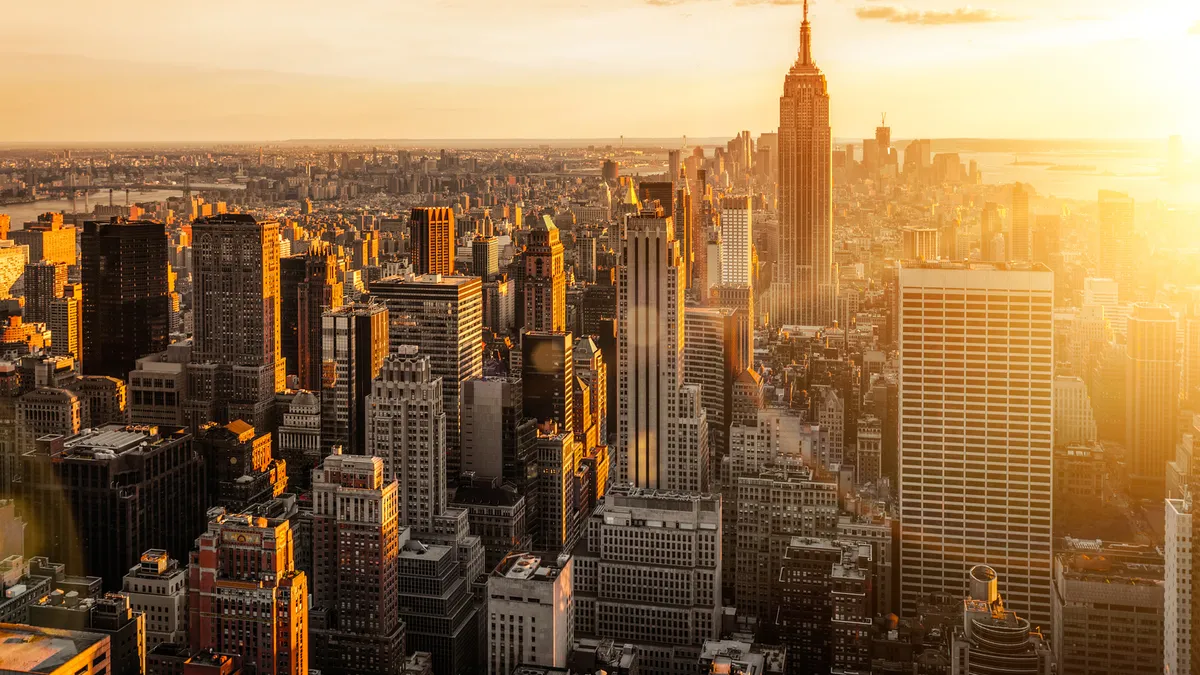Dive Brief:
- New York City Mayor Bill de Blasio last week proposed a sweeping efficiency program aimed at the city's largest and most-polluting buildings, complete with financial assistance for those in need of help and sharp penalties for those who ignore the directive.
- The program would require more than 14,000 buildings to replace boilers, roofs, water heaters and windows to meet a "strict fossil fuel use target by 2030," according to de Blasio.
- The program, which must be approved by the City Council, targets buildings larger than 25,000 square feet. New York City is targeting an 80% reduction in greenhouse gas emissions by 2050.
Dive Insight:
New York City's mayor laid out the aggressive efficiency program last week, noting that about 14,500 large buildings in the city are responsible for a quarter of the city's emissions, an "amazing figure," de Blasio said.
Penalties for a 1 million square-foot building in New York City could reach $2 million annually for not meeting the 2030 targets. "There will be consequences for any who do not abide by this new policy," he said. "Real financial penalties, real teeth, will help to make sure this new policy works."
The city's efficiency push is part of its commitment to address climate change, particularly in the wake of President Trump's decision to exit the Paris climate accord.
"We are not waiting on President Trump and his cabinet of deniers to address this crisis," de Blasio said. "We have no such illusion. We understand it's our responsibility. We are not going to put heads in the sand. We are not going to run away from the Paris Accord. In fact we are going to embrace even more intensely than ever."
The mayor said his office would work with City Council to make the program formal. For smaller buildings that will need assistance to replace expensive equipment, de Blasio said that help would be available through low-interest loans.
Last year, the Obama Administration secured commitments from two dozen cities, states and businesses committed to improving the energy efficiency of their buildings 20% by 2020. New York City was among several cities tapped for three-year partnerships with the Department of Energy.















